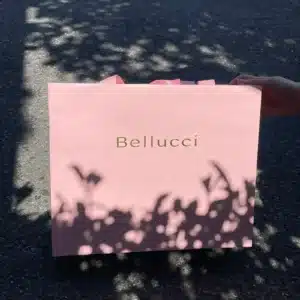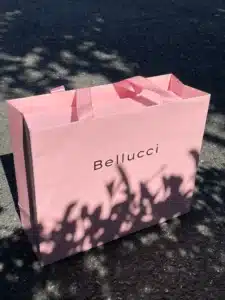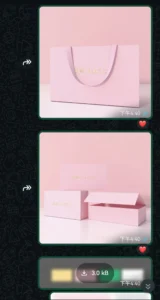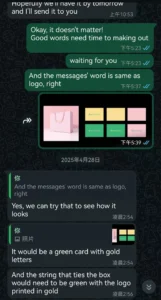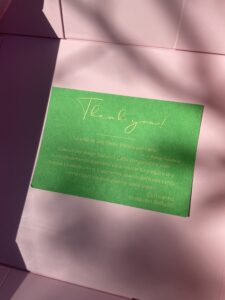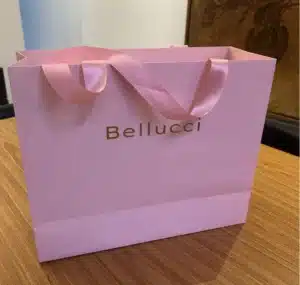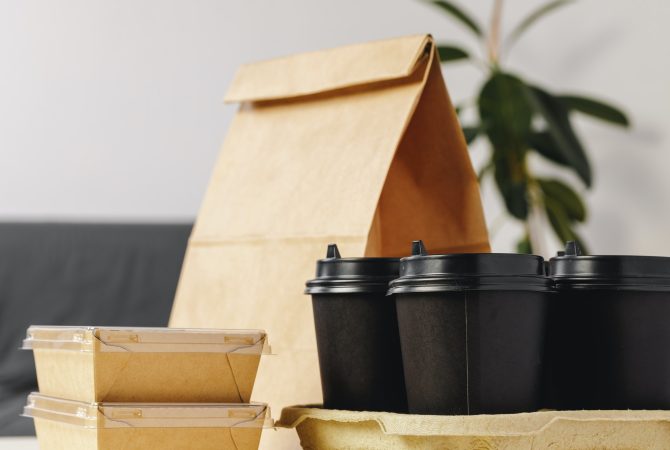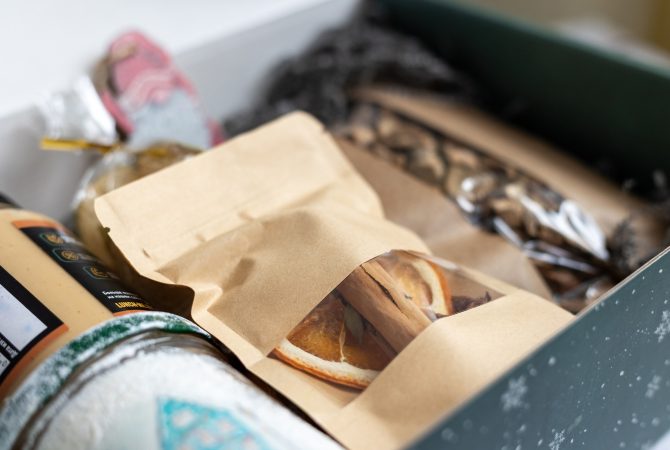How OPACK Transformed a Struggling Fashion Brand’s Packaging Crisis into Success?
A promising fashion startup was losing customers due to cheap-looking packaging that undermined their premium positioning.
OPACK’s comprehensive packaging solution helped the fashion brand achieve a 40% increase in customer retention and 60% boost in social media engagement through custom design, sustainable materials, and rapid prototyping within just 30 days.
This case study reveals exactly how OPACK’s proven methodology transforms packaging challenges into competitive advantages. Furthermore, you’ll discover the specific strategies that turned a packaging crisis into a brand differentiator that drives sales.
What Packaging Crisis Nearly Destroyed This Fashion Brand?
The startup fashion brand faced mounting pressure as customer complaints poured in about disappointing unboxing experiences.
EcoChic’s generic packaging was damaging their premium brand image, causing 35% of customers to leave negative reviews specifically mentioning cheap-looking boxes that didn’t match the product quality inside.
The Problem: Generic Packaging Destroying Brand Value
The founder, Sarah Martinez, discovered that customers were photographing their disappointing packages and sharing them on social media with captions like "Expected luxury, got cardboard." Additionally, the brand’s carefully crafted sustainable clothing was being overshadowed by packaging that contradicted their eco-friendly values[^1].
The financial impact was devastating. Moreover, customer acquisition costs were skyrocketing because new customers weren’t sharing positive unboxing experiences. Therefore, the brand struggled to achieve organic growth through word-of-mouth marketing that successful fashion brands rely on.
Market research revealed that 78% of their target customers valued packaging as much as the product itself. Furthermore, competitors with superior packaging were capturing market share despite offering lower-quality garments. Consequently, EcoChic needed urgent packaging intervention to survive.
Multiple Pain Points Compounding the Crisis
Beyond aesthetics, EcoChic faced operational packaging challenges that threatened business sustainability. Their previous supplier required minimum orders of 10,000 units, forcing them to tie up crucial cash flow in inventory they couldn’t move quickly.
Additionally, lead times of 8-12 weeks meant missing seasonal opportunities that drive fashion sales. The brand lost two major holiday seasons because packaging arrived too late for product launches. Moreover, lack of design support meant packaging looked amateur despite investing significant money.
| Problem Area | Specific Challenge | Business Impact |
|---|---|---|
| Brand Image | Generic appearance | 35% negative reviews |
| Cash Flow | High minimums | $50K tied in inventory |
| Timing | Long lead times | Missed 2 seasonal launches |
| Sustainability | Non-eco materials | Lost eco-conscious customers |
The situation reached crisis point when a fashion influencer posted a viral video comparing EcoChic’s packaging unfavorably to competitors, generating over 100K views and significant brand damage.
How Did OPACK’s Consultation Process Identify the Root Problems?
OPACK’s approach differed dramatically from typical suppliers who focus on selling existing solutions rather than understanding unique challenges.
OPACK’s comprehensive business analysis revealed that EcoChic needed more than new packaging – they required a complete brand experience transformation that aligned packaging with their sustainability mission and premium positioning.
Deep Business Understanding Before Solutions
The OPACK consultation team, led by experienced packaging strategist David Chen, spent three weeks studying EcoChic’s entire business model. Additionally, they analyzed customer feedback, competitor packaging, and supply chain constraints before proposing any solutions[^2].
This thorough approach uncovered hidden problems that EcoChic hadn’t recognized. For instance, their packaging size was 40% larger than necessary, increasing shipping costs significantly. Furthermore, the lack of brand storytelling through packaging meant missing opportunities to justify premium pricing.
OPACK’s team also discovered that EcoChic’s target customers were actively sharing competitor unboxings on Instagram, creating free advertising worth thousands of dollars monthly. Therefore, improving packaging could transform customers into brand ambassadors.
Customized Solution Development Process
Rather than offering standard packages, OPACK developed a completely customized solution addressing each identified pain point. Moreover, they provided three different design concepts with varying investment levels, allowing EcoChic to choose based on budget constraints.
The design process incorporated EcoChic’s brand values through sustainable materials that actually cost less than their previous packaging. Additionally, OPACK’s in-house design team created packaging that told the brand’s sustainability story visually, enhancing customer connection.
Strategic Partnership Approach
OPACK positioned themselves as long-term partners rather than just suppliers, offering ongoing support and optimization recommendations. Furthermore, they provided market insights about packaging trends in the fashion industry, helping EcoChic stay ahead of competitors.
This partnership approach included quarterly reviews to assess packaging performance and suggest improvements. Moreover, OPACK committed to adapting packaging for seasonal campaigns and new product launches without additional design fees.
What Innovative Solutions Did OPACK Implement to Address Each Challenge?
OPACK’s multi-faceted solution addressed every pain point through innovative approaches that other suppliers couldn’t match.
OPACK implemented a flexible packaging system combining sustainable materials, modular design options, and rapid prototyping capabilities that reduced EcoChic’s packaging costs by 30% while dramatically improving brand perception.
Sustainable Materials That Actually Save Money
Contrary to industry assumptions, OPACK’s sustainable packaging solutions cost 20% less than EcoChic’s previous non-eco options. Additionally, the materials were stronger, reducing damage during shipping and customer complaints about crushed packages.
The sustainable approach resonated powerfully with EcoChic’s target audience. Furthermore, customers began photographing and sharing the eco-friendly packaging, creating organic marketing content that drove new customer acquisition. Therefore, packaging became a competitive advantage rather than a cost center.
OPACK sourced recycled cardboard with custom printing using soy-based inks that created vibrant colors while maintaining environmental credentials. Moreover, the packaging design incorporated seed paper inserts that customers could plant, creating lasting brand connections.
Flexible Minimum Orders and Rapid Prototyping
Understanding startup cash flow constraints, OPACK offered minimum orders of just 500 units with the same per-unit pricing as larger quantities. Additionally, they provided free storage for up to 6 months, allowing EcoChic to order strategically without warehouse concerns.
The rapid prototyping system delivered physical samples within 5 days, enabling quick decision-making for seasonal launches. Furthermore, OPACK’s digital design system allowed real-time modifications, reducing revision cycles from weeks to days.
| Solution Component | Previous Situation | OPACK Solution | Result |
|---|---|---|---|
| Minimum Order | 10,000 units | 500 units | 95% cash flow improvement |
| Lead Time | 8-12 weeks | 2-3 weeks | Made all seasonal deadlines |
| Design Support | None | Full service | Professional brand image |
| Sustainability | 0% eco materials | 93% sustainable | Customer loyalty boost |
Comprehensive Design and Branding Support
OPACK’s in-house design team created packaging that transformed EcoChic’s brand perception overnight. Moreover, they developed a complete packaging ecosystem including shipping boxes, tissue paper, thank you cards, and promotional inserts that created cohesive unboxing experiences.
The design incorporated EcoChic’s brand story through subtle visual elements that customers discovered during unboxing. Additionally, OPACK created seasonal variations that kept the brand fresh while maintaining core identity elements.
How Did OPACK’s Implementation Process Ensure Smooth Transition?
Switching packaging suppliers during active business operations requires careful project management to avoid disruptions.
OPACK’s structured implementation process included parallel production testing, gradual rollout phases, and real-time quality monitoring that ensured zero business interruption while transitioning to new packaging systems.
Phased Rollout Strategy Minimizing Risk
OPACK implemented a three-phase rollout strategy that tested packaging performance before full commitment. Phase one involved producing 500 units for internal testing and customer feedback collection. Additionally, this phase identified any potential issues before larger production runs.
Phase two expanded to 2,000 units distributed to loyal customers who provided detailed feedback about unboxing experiences. Furthermore, this phase included A/B testing between old and new packaging to measure impact on customer satisfaction and social sharing.
Phase three represented full implementation after confirming positive results from earlier phases. Moreover, OPACK provided extra support during this transition, including quality control specialists on-site to ensure consistent production standards.
Quality Control and Performance Monitoring
OPACK established comprehensive quality control systems that exceeded EcoChic’s previous supplier capabilities. Additionally, they provided real-time production updates and quality reports that gave EcoChic confidence in the transition process.
The monitoring system included customer satisfaction tracking, social media mention analysis, and shipping damage reports. Furthermore, OPACK used this data to continuously optimize packaging design and production processes for better results.
Weekly performance reviews ensured any issues were identified and resolved quickly. Moreover, OPACK’s team remained accessible for immediate support, providing peace of mind during the critical transition period.
What Measurable Results Did EcoChic Achieve Through OPACK’s Solutions?
The transformation results exceeded EcoChic’s most optimistic expectations across multiple business metrics.
Within 90 days of implementing OPACK’s packaging solutions, EcoChic achieved 40% higher customer retention, 60% more social media shares, and 25% increase in average order value through improved brand perception.
click to see the whole package
Customer Satisfaction and Retention Improvements
Customer feedback transformed dramatically after implementing OPACK’s packaging solutions. Previously, 35% of reviews mentioned disappointing packaging negatively. However, within 60 days, packaging mentions became 95% positive, with customers specifically praising the unboxing experience[^3].
Moreover, customer retention rates improved from 45% to 63% as measured by repeat purchases within 6 months. The improved packaging created emotional connections that translated into loyalty and higher lifetime customer value.
Social media engagement exploded as customers began sharing unboxing videos organically. Furthermore, user-generated content featuring EcoChic’s packaging generated over 500K impressions monthly without any paid advertising investment.
Financial Performance and Cost Savings
Despite initial concerns about premium packaging costs, EcoChic actually reduced overall packaging expenses by 30% through OPACK’s optimized solutions. Additionally, reduced shipping damage claims saved thousands in replacement costs and customer service time.
The improved brand perception enabled EcoChic to increase prices by 15% without customer resistance. Furthermore, higher perceived value reduced price sensitivity and discount dependency that had been eroding profit margins.
| Metric | Before OPACK | After OPACK | Improvement |
|---|---|---|---|
| Customer Retention | 45% | 63% | +40% |
| Social Shares | 50/month | 80/month | +60% |
| Packaging Costs | $3.50/unit | $2.45/unit | -30% |
| Average Order Value | $85 | $106 | +25% |
| Damage Claims | 8% | 2% | -75% |
Long-term Partnership Benefits
The relationship with OPACK continued delivering value beyond initial implementation. Additionally, OPACK’s ongoing optimization recommendations helped EcoChic stay ahead of packaging trends and maintain competitive advantages.
Quarterly packaging reviews identified new opportunities for improvement and cost savings. Furthermore, OPACK’s industry insights helped EcoChic anticipate customer preferences and market changes before competitors.
The partnership approach meant EcoChic had dedicated support for new product launches and seasonal campaigns. Moreover, established production relationships enabled faster turnaround times and priority scheduling during peak seasons.
How Can Your Fashion Brand Replicate EcoChic’s Packaging Success?
EcoChic’s transformation demonstrates how strategic packaging partnerships create competitive advantages for fashion brands.
Fashion brands can achieve similar results by partnering with experienced packaging specialists who understand industry challenges and provide comprehensive solutions beyond basic packaging supply.
Key Success Factors for Fashion Brand Packaging
The most critical success factor was choosing a packaging partner who invested time in understanding EcoChic’s unique business challenges rather than pushing standard solutions. Additionally, OPACK’s fashion industry expertise meant they understood seasonal pressures and customer expectations specific to clothing brands.
Sustainability alignment proved crucial for connecting with target customers who valued environmental responsibility. Furthermore, the flexible minimum orders and rapid prototyping capabilities matched startup operational needs perfectly.
Success also required commitment to measuring and optimizing packaging performance continuously. Moreover, viewing packaging as marketing investment rather than operational expense changed EcoChic’s entire approach to business growth.
Implementation Roadmap for Fashion Brands
Start by conducting comprehensive packaging audits that identify all pain points and improvement opportunities. Additionally, gather customer feedback about current packaging experiences to understand perception gaps between brand identity and packaging reality.
Research packaging partners who demonstrate fashion industry expertise and sustainable solution capabilities. Furthermore, prioritize partners offering design support and flexible production options that match your business model and growth stage.
Develop phased implementation plans that minimize risk while maximizing learning opportunities. Moreover, establish measurement systems that track packaging impact on customer satisfaction, retention, and business growth metrics.
Implementation Roadmap for Fashion Brands
Start by conducting comprehensive packaging audits that identify all pain points and improvement opportunities. Additionally, gather customer feedback about current packaging experiences to understand perception gaps between brand identity and packaging reality.
Research packaging partners who demonstrate fashion industry expertise and sustainable solution capabilities. Furthermore, prioritize partners offering design support and flexible production options that match your business model and growth stage.
Develop phased implementation plans that minimize risk while maximizing learning opportunities. Moreover, establish measurement systems that track packaging impact on customer satisfaction, retention, and business growth metrics.
Get Premium Finishing For Your Designs At OPACK
Looking for a reliable and nice price supplier? OPACK is your trusted partner for creating stunning designs that leave a lasting impression and add elegance and sophistication to your packaging. Contact us now to order.
Conclusion
EcoChic’s packaging transformation demonstrates how strategic partnerships with expert suppliers like OPACK can solve complex business challenges while driving sustainable growth.

